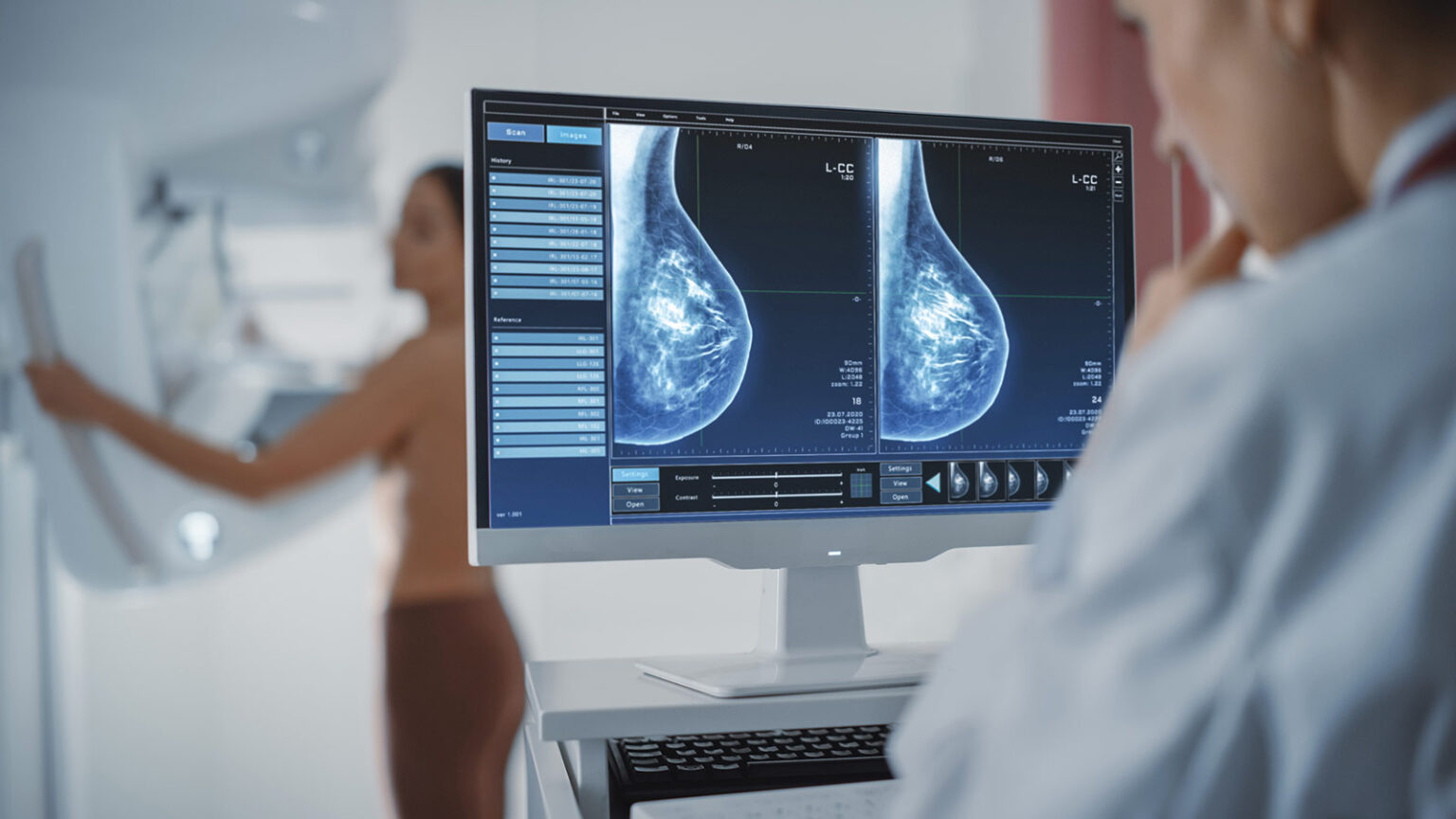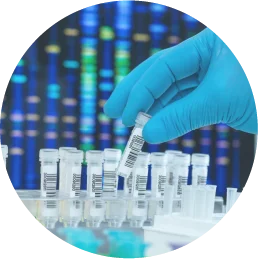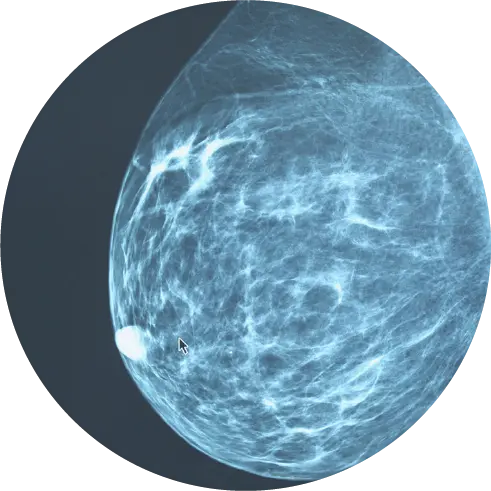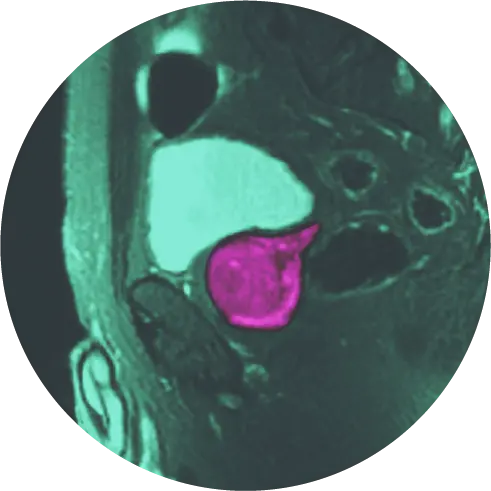Have you heard the phrase “dense breasts” and wondered what it means? Have you heard it makes screening mammography more difficult and increases your likelihood of breast cancer? Even with dense breasts, precision medicine and breast cancer screening at outpatient imaging centers can detect cancer in stage 1 or 2 when it can be treated with minimally invasive therapies. Early detection reduces the cost and quality-of-life impacts of more aggressive, later-stage disease treatment.
Breast density may have been mentioned during a hands-on breast exam in your doctor’s office, or you may have noticed it pop up on results from a recent mammogram. Even though the term is frequently used, many of us don’t know exactly what it means or how it can impact our overall breast health.
Why Does Breast Density Matter?
Breast density matters for two distinct reasons. Depending on a woman’s level of breast density, it is possible that breast cancer screenings can be more difficult and the chance of developing cancer can be elevated.
First, mammograms may not be as good at picking up tumors (especially at an early stage) in dense breast tissue. Normal dense tissue looks like suspicious lumps which can make it difficult to differentiate lumps that may require more testing versus benign connective tissue or other dense breast tissue.1 This means that some suspicious lumps may be overlooked, particularly if a woman doesn’t have a previous mammogram where images can be compared.
Second, there appears to be a link between dense breasts and a higher risk of developing breast cancer.2 Scientists believe that there is a direct correlation between the two, however more research is needed to investigate this link and test the various hypotheses.
Now that we’ve covered the importance of understanding breast density, let’s explore the different parts of the breast and the four levels of breast density.
The Different Parts of the Breast
Breasts are highly complex body parts made up of various types of tissue with unique function and structure. All breasts contain fatty, glandular, ductal and fibrous tissues and the way these tissues combine together gives them their unique characteristics.
For instance, breasts are particularly rich in fatty tissue, which gives them their shape and size. As you might expect, breasts with more fatty tissue are likely to be larger than other breasts. Factors like genetics, body type, and even age can contribute to why one woman might have more or less fatty tissue than another.
Breasts also contain significant amounts of glandular tissue and ducts. This tissue produces milk in lactating women and moves the milk to the nipple for nursing. Another essential type of tissue in the breast is fibrous tissue. This is the tissue that holds all the other tissue firmly in place.
As we will explore in more detail below, some women have more fibrous tissue than others. More fibrous tissue means that your breasts are relatively denser.
The Four Levels of Breast Density
Women have different amounts of breast density because they have different amounts of fatty and connective tissue in their breasts; connective tissue and muscles are much denser than fat.
There are four categories when it comes to the different levels of breast density.1
- Fatty breast tissue: At this level, the breasts have a very high level of fatty tissue and are the least dense. Only a relatively small number of breasts fall into this category of density.
- Scattered fibroglandular tissue: There are scattered areas of dense tissue in the breast, but there is still more non-dense fat. Approximately 40 percent of women have this type of breast tissue.
- Heterogeneously dense tissue: Four out of ten women have breasts that fall under this level. These breasts have significant connective and glandular tissue. While there are some areas of non-dense tissue, the majority is still dense.
- Extremely dense tissue: When most of the breast tissue is dense, it falls into this category. Only about 10 percent of women have breasts in this category.
Effective Tests for Dense Breasts
Although it can be more challenging to identify potential breast cancer in women with dense breasts, advanced tests are available to help overcome this hurdle. HALO Precision Diagnostics™ offers breast screenings at several of our locations with cutting-edge technology and trained specialists with years of expertise evaluating images from women with all levels of breast density.
If you’ve been told that you have heterogeneously dense or extremely dense breast tissue, you may want to consider the following tests that can potentially generate life-saving information.
- Digital ultrasound: This test, which is based on the use of sound waves, can more accurately differentiate between dense tissue and potentially cancerous lumps.
- MRI scan: An MRI can offer very detailed images of what is happening inside the breast and can help doctors determine if an invasive biopsy may or may not be necessary.
- 3D mammogram: These are better at differentiating tissue than a traditional mammogram, since it takes more pictures from more angles. New research continues to aim toward determining the efficacy gap between these two types of mammograms and how this may positively impact women’s mortality rates.3 Check out this blog to learn more about 3D mammograms!
HALO is Here to Help
At HALO our mission is saving lives through early detection. We offer breast screenings at our HALO Breast Care Center in Chico, Silicon Valley MRI in Silicon Valley, Palms Imaging Center in Oxnard, and Precision Imaging Centers’ four locations in and around Jacksonville, Florida. Our teams of highly trained and empathetic breast care professionals recognize that breast health is essential to a woman’s overall health. Early diagnosis allows for earlier, less-invasive, and more-precise treatment, as well as a longer, better quality of life. Take control of your health today by reaching out to our breast care experts at 877-225-2831 or by filling out the form below.
References
- https://www.cancer.org/cancer/breast-cancer/screening-tests-and-early-detection/mammograms/breast-density-and-your-mammogram-report.html
- https://www.cdc.gov/cancer/breast/basic_info/dense-breasts.htm
- https://www.mayoclinic.org/tests-procedures/3d-mammogram/about/pac-20438708




